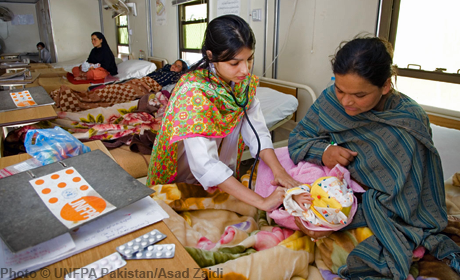Data Menu
-
Country Pages
-
Asia & the Pacific
- Afghanistan
- Bangladesh
- Bhutan
- Cambodia
- China
- India
- Indonesia
- Iran, Islamic Republic of
- Lao People's Democratic Republic
- Malaysia
- Maldives
- Mongolia
- Myanmar
- Nepal
- Pakistan
- Papua New Guinea
- Philippines
- Sri Lanka
- Thailand
- Timor-Leste
- Viet Nam
-
Eastern Europe & Central Asia
- Albania
- Armenia
- Azerbaijan
- Belarus
- Bosnia and Herzegovina
- Georgia
- Kazakhstan
- Kosovo Office
- Kyrgyzstan
- Moldova, Republic of
- North Macedonia
- Serbia
- Tajikistan
- Türkiye
- Turkmenistan
- Ukraine
- Uzbekistan
-
Arab States
- Algeria
- Djibouti
- Egypt
- Iraq
- Jordan
- Lebanon
- Libya
- Morocco
- Oman
- Palestine
- Somalia
- Sudan
- Syrian Arab Republic
- Tunisia
- Yemen
-
East & Southern Africa
- Angola
- Botswana
- Burundi
- Comoros
- Congo, the Democratic Republic of the
- Eritrea
- Eswatini
- Ethiopia
- Kenya
- Lesotho
- Madagascar
- Malawi
- Mauritius
- Mozambique
- Namibia
- Rwanda
- Seychelles
- South Africa
- South Sudan
- Tanzania, United Republic of
- Uganda
- Zambia
- Zimbabwe
-
Latin America & the Caribbean
- Argentina
- Bolivia, Plurinational State of
- Brazil
- Chile
- Colombia
- Costa Rica
- Cuba
- Dominican Republic
- Ecuador
- El Salvador
- Guatemala
- Haiti
- Honduras
- Mexico
- Nicaragua
- Panama
- Paraguay
- Peru
- Uruguay
- Venezuela, Bolivarian Republic of
- Caribbean (multi-country)
-
West & Central Africa
- Benin
- Burkina Faso
- Cabo Verde
- Cameroon
- Central African Republic
- Chad
- Congo
- Côte d'Ivoire
- Equatorial Guinea
- Gabon
- Gambia
- Ghana
- Guinea
- Guinea-Bissau
- Liberia
- Mali
- Mauritania
- Niger
- Nigeria
- Sao Tome and Principe
- Senegal
- Sierra Leone
- Togo
-
Country Menu

UNFPA Pakistan
The world’s sixth most populous country, Pakistan contends with the risk of natural disasters, a large and growing youth bulge, and entrenched poverty and inequality, all of which pose significant challenges to delivering reproductive health services. The contraceptive prevalence rate has stagnated, along with a very low number of skilled-attendance at births. Through policy advocacy and national capacity development, UNFPA helps to accelerate progress on MDG5 for a quality and increased coverage of reproductive health and family planning services. UNFPA also supports the strengthening of data collection and analysis related to population issues.
Data overview
View more
Population
Population, by age group, per cent
- Population aged 0-14
- Population aged 15-64
- Population aged 65+
Sexual and reproductive health
Births attended by skilled health personnel, per cent, 2014-2019
- Births attended by skilled health personnel
Family Planning
Proportion of demand satisfied with modern methods, women aged 15-49, per cent, 2022
- Modern method
Education
Total net enrolment rate, percent
Gender, Rights, and Human Capital
Decision making on sexual and reproductive health and reproductive rights, percent, 2007-2022:
31
Adolescent birth rate per 1,000 girls aged 15-19, 2024:
41
Intimate partner violence, past 12 months, percent, 2018:
16
Decision making on women's own health care, percent, 2007-2022:
52
Decision making on contraceptive use, percent, 2007-2022:
85
Decision making on sexual intercourse, percent, 2007-2022:
55
Harmful Practices
Child marriage by age 18, percent, 2023:
18
Female genital mutilation prevalence among girls aged 15-19, percent, 2022:
-
Demographic Dividend: Pakistan
View more
Population Pyramid
Year: 1950
females
males
Population in thousands
Life Expectancy
Life expectancy is 37
Life expectancy is 45
Life expectancy is 51
Life expectancy is 56
Life expectancy is 59
Life expectancy is 61
Life expectancy is 53
Life expectancy is 60
Life expectancy is 64
Life expectancy is 66
Life expectancy is 66
Life expectancy is 65
Life expectancy is 66
Life expectancy is 67
Life expectancy is 68
Life expectancy is 69
Life expectancy is 69
Life expectancy is 70
Life expectancy is 71
Life expectancy is 71
Life expectancy is 72
Life expectancy is 72
Life expectancy is 73
Life expectancy is 74
Life expectancy is 75
Life expectancy is 75
Life expectancy is 76
Life expectancy is 77
Life expectancy is 78
Life expectancy is 79
Life expectancy is 38
Life expectancy is 44
Life expectancy is 50
Life expectancy is 55
Life expectancy is 59
Life expectancy is 62
Life expectancy is 66
Life expectancy is 68
Life expectancy is 70
Life expectancy is 71
Life expectancy is 71
Life expectancy is 71
Life expectancy is 71
Life expectancy is 72
Life expectancy is 73
Life expectancy is 74
Life expectancy is 75
Life expectancy is 75
Life expectancy is 76
Life expectancy is 77
Life expectancy is 77
Life expectancy is 78
Life expectancy is 79
Life expectancy is 79
Life expectancy is 80
Life expectancy is 80
Life expectancy is 81
Life expectancy is 82
Life expectancy is 82
Life expectancy is 83
Life expectancy is 73
Life expectancy is 74
Life expectancy is 75
Life expectancy is 75
Life expectancy is 75
Life expectancy is 75
Life expectancy is 76
Life expectancy is 76
Life expectancy is 76
Life expectancy is 77
Life expectancy is 76
Life expectancy is 76
Life expectancy is 76
Life expectancy is 76
Life expectancy is 76
Life expectancy is 77
Life expectancy is 77
Life expectancy is 77
Life expectancy is 77
Life expectancy is 78
Life expectancy is 78
Life expectancy is 78
Life expectancy is 79
Life expectancy is 79
Life expectancy is 80
Life expectancy is 80
Life expectancy is 80
Life expectancy is 81
Life expectancy is 82
Life expectancy is 82
Life expectancy is 74
Life expectancy is 74
Life expectancy is 75
Life expectancy is 76
Life expectancy is 76
Life expectancy is 76
Life expectancy is 77
Life expectancy is 78
Life expectancy is 79
Life expectancy is 79
Life expectancy is 79
Life expectancy is 79
Life expectancy is 79
Life expectancy is 79
Life expectancy is 79
Life expectancy is 80
Life expectancy is 80
Life expectancy is 80
Life expectancy is 81
Life expectancy is 81
Life expectancy is 82
Life expectancy is 82
Life expectancy is 82
Life expectancy is 83
Life expectancy is 83
Life expectancy is 84
Life expectancy is 84
Life expectancy is 85
Life expectancy is 85
Life expectancy is 85
Total fertility rate
Total fertility rate is 5.98
Total fertility rate is 5.98
Total fertility rate is 6.04
Total fertility rate is 6.15
Total fertility rate is 6.29
Total fertility rate is 6.46
Total fertility rate is 6.60
Total fertility rate is 6.71
Total fertility rate is 6.77
Total fertility rate is 6.77
Total fertility rate is 6.72
Total fertility rate is 6.63
Total fertility rate is 6.40
Total fertility rate is 5.96
Total fertility rate is 5.47
Total fertility rate is 4.98
Total fertility rate is 4.51
Total fertility rate is 4.09
Total fertility rate is 3.71
Total fertility rate is 3.38
Total fertility rate is 3.12
Total fertility rate is 2.89
Total fertility rate is 2.71
Total fertility rate is 2.56
Total fertility rate is 2.42
Total fertility rate is 2.31
Total fertility rate is 2.22
Total fertility rate is 2.13
Total fertility rate is 2.06
Total fertility rate is 2.01
Select year range
Year : 1974
Note: Years 2017 to 2100 are projected data.
i
Source: United Nations, Population Division, World Population Prospects: 2017 Revision
Dashboards available for Pakistan

Social Updates
Tweets from UNFPATürkiye